Ants can be found almost everywhere in the world, but the type of ants will differ in each place.
Vermont is known for its lush green forests, picturesque countryside, and stunning autumn foliage. In addition to its natural beauty, it’s worth mentioning the state’s famous maple syrup and delicious cheese. And let’s not forget about the adorable dairy cows that dot the landscape.
Vermont is also home to charming small towns, world-class ski resorts, and a thriving craft beer scene.
Overall, Vermont offers a unique blend of natural wonders and cultural experiences, making it a must-visit destination for any traveler.
While all of this is nice, we can’t forget the cool ants that are in Vermont. These ants listed below would be perfect to start your ant-keeping journey, as they’re well-adjusted to Vermont’s humidity, water, and temperature!
Types Of Ants In Vermont
Acrobat Ants, Argentine Ants, Bigheaded Ants, Carpenter Ants, Citronella Ants, Field Ants, Ghost Ants, Little Black Ants, Little Yellow Ants, Moisture Ants, Odorous House Ants, Pavement Ants, Pharaoh Ants, Small honey Ants, Thief Ants
Argentine Ant
An ant that is dominant in northern Argentina, Bolivia, Uruguay, Paraguay, and southern Brazil is called the Argentine ant, known initially as Iridomyrmex humilis.
They have spread to many different regions that have a subtropical climate. The ants can fit through fractures and openings as tiny as 1 millimeter in diameter.
These ants range in length from 1.6 to 2.8 millimeters. The Queens are taller and longer than the worker ants, measuring about 4.2–6.4 millimeters in length.

These ants will establish colonies under the dirt, in crevices in concrete pillars, within boards or timbers, or even amongst the walls in human homes.
Due to their limited capacity to construct deeper homes, they typically build shallow nesting sites in natural settings, usually behind tiny stones or scattered fallen leaves.
Nevertheless, Argentine ants will quickly take up any area, eating and invading all the different types of insects within the same ecosystem.
Carpenter Ant
Carpenter ants got their name because they dig wood to make their nests, creating neat tunnels within the wood.
These ants will only chew and burrow through the wood to build nests; Interestingly, they do not consume wood.
Depending on the species, Carpenter ants’ length ranges from 12 to 25 mm.

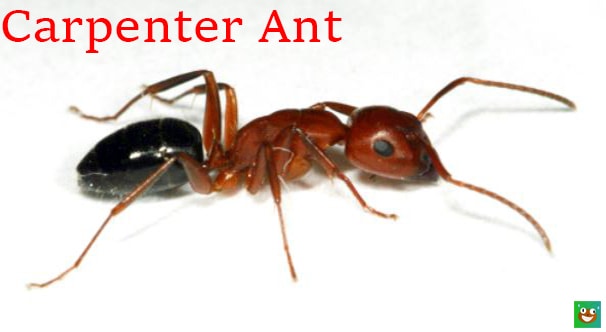
Carpenter ants that are black are frequent pests, but these insects can also be all-black, all-red, or all-brown.
When mature, the black western carpenter ants colony has ten to twenty thousand workers.
Incredibly, some big colonies have more than fifty thousand ants.
In most territories, there is only one active, wingless Queen. The colony must be older than two years before the production of swarmers takes place (potential new queens).
Instead, swarmers are produced the year before and kept in the nest during winter in preparation for the ensuing years’ dispersal.
In the east of the US, swarmers arrive from May through August, whereas in the west, they appear from February till June.
Citronella Ant
The hue of citronella ants ranges from yellow to yellowish-brown. Workers vary about an inch in length, and queens can reach lengths of a little more.
If seen from the front, their segmented bodies are irregularly rounded. Citronella ants get their name due to the lemon or citrus scent they release when squashed.

Citronella ants are mostly found at night and rarely spotted during the daytime.
Citronella ants build their nests outside in damp soil near a house s base, below concrete blocks, around logs, and under dead or rotting trees.
In addition, the ants will build their nests in homes with wet spots, such as behind bathroom walls and beneath kitchen and bathroom flooring.
Honeydew secreted by insects that dwell underground and eat plant roots is the primary food source for citronella workers.
As a result, they rarely, if ever, consume food from households.
Field Ant
The field ant is one of Wisconsin s most prevalent insects (Formica spp.). The ants are renowned for creating substantial mounds that destroy many residential lawns’ beautiful appearance.
Subsequently, cutting the grass is challenging and prevents the development of herb and woody ornamental plants.
Field ants are pretty big, with lengths between 1.5 and 3 inches.
Some species are entirely black, while others have either a black or red color. Their hue might change.
Colonies of field ants can last for over ten years. The queen lives in each nest and produces all the embryos that eventually become infertile females (workers) or males (drones).
They mostly gather food outside, consuming both living and dead bugs alongside aphid honeydew.
Field ants do not need to be controlled in places where there is no civilization and usually dominate non-residential regions.
Ghost Ant
This ant looks like it should star in a Halloween movie.
With a dark shade on its head, pale and translucent legs, and Gaster, this Ant seems like it could be a ghost.
This ant is about 1/16th inch long but sometimes looks even smaller.
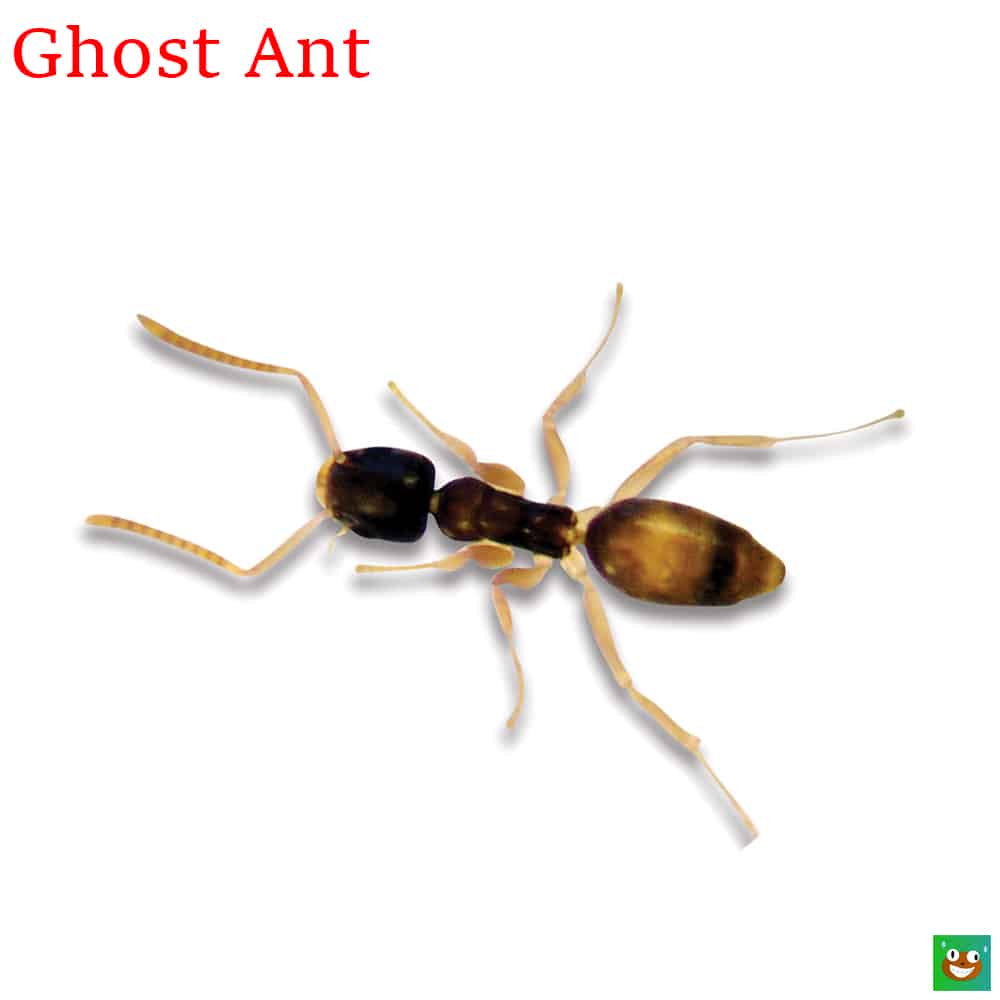
The unique thing about this ant is since its legs are translucent, many people underestimate their size
…or don’t see this ant crawling around at all.
These ants love sweets, so make sure you don’t drop any cookies during your midnight snack run.
An interesting fact about Ghost Ants is that they can actually have multiple Queens in one nest.
This is unique, as most ant species have one Queen Ant.
Little Black Ant
The little black ant is native to North America.
Known for their lustrous black hue, the workers are 1 – 2 mm long, and the Queen is 4 – 5 mm in size.
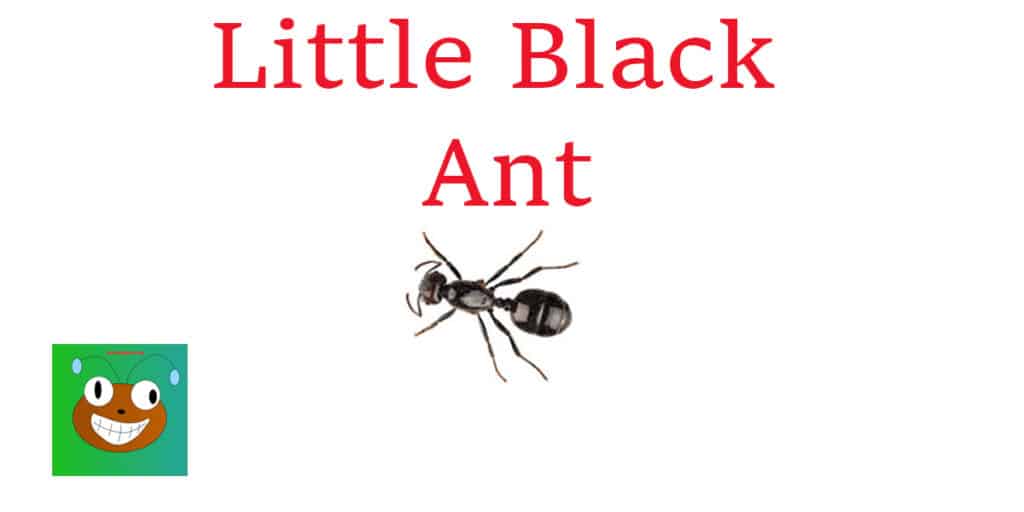
A colony may have more than one Queen because it’s a polygynous species.
A nest typically has a few hundred workers, a modest size.
These scavengers, known as Monomorium minimum, can eat anything, including dead insects and bird droppings.
Some of their favorite insects to eat are fall webworm larvae and codling moth caterpillars.
Additionally, they tend to collect honeydew insects like the soybean aphid. Although they prefer to nest on earth mounds, they may scan for other homes with ease of access.
Queens and males execute the nuptial flight, bonding in midair, mostly in summertime.
The males pass away soon after. Every Queen builds a new nest, removes her wings, then lays eggs.
Since this colony is polygynous, expect more queens shortly after. It takes around a month for an egg to mature into an adult.
Little Yellow Ant
A subspecies of Plagiolepis is the tiny yellow ant or Plagiolepis alluaudi.
It is set apart from most other little yellow kinds of ants and is acknowledged as a common exotic species.
It’s also termed Alluauds little yellow ant in honor of Charles A. Alluaud.
A typical Plagiolepis alluaudi measures 1/16 inches in length, has 11 antennal sections, appears yellow, and has a spherical head.
The oblong-headed P. exigua is also the sole yellow ant within the genus Plagiolepis.
It is currently unknown if Plagiolepis alluaudi bites or stings people. However, this ant species can spread illness and may pose a hazard to commercial crops such as oranges.
Developed colonies are challenging to exterminate.
However, setting out ant baits may eliminate some in an extensive settlement at once.
In addition, these ants have been seen devouring sweet items within human dwellings.
Odorous House Ant
The worker-odorous house ants are around 3mm long and black to dark brown.
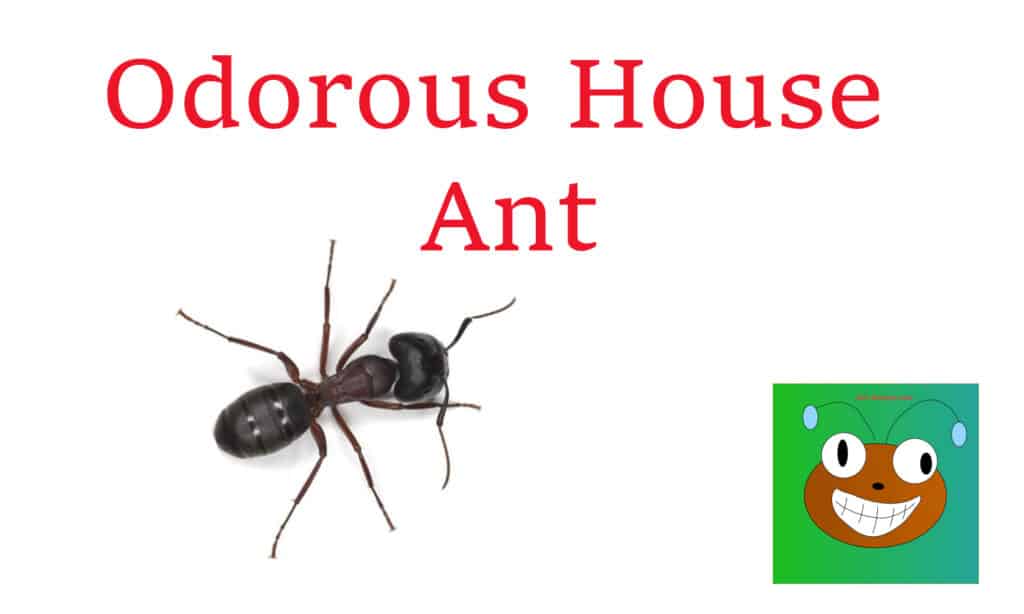
Additionally, they have antennae that resemble a long stick.
Crushed, odorous house ants produce a pungent, rotten coconut-like stench that gives these insects their name.
Odorous house ants build their nests indoors next to moist areas, such as heaters, heater cavities along hot water pipes, under leaking fixtures, and on termite-damaged wood.
Outside, odorous ants are frequently discovered on bare soil or beneath firewood piles. Odorous house ants enjoy eating sweets and particularly enjoy consuming honeydew.
Occasionally, they eat other things, such as pet food or insects. Approximately tri-monthly, they often relocate their nests because of rain.
They create new colonies following mating flights at the end of spring and summer.
Colonies are also split by the budding process, in which a queen leaves her nest with some workers to start a new colony elsewhere.
Pavement Ant
The head and thorax of pavement ants are marked with grooves, the thorax being the only part of the body-bearing spines.
Their size is usually between 2.5 and 3 mm in length.
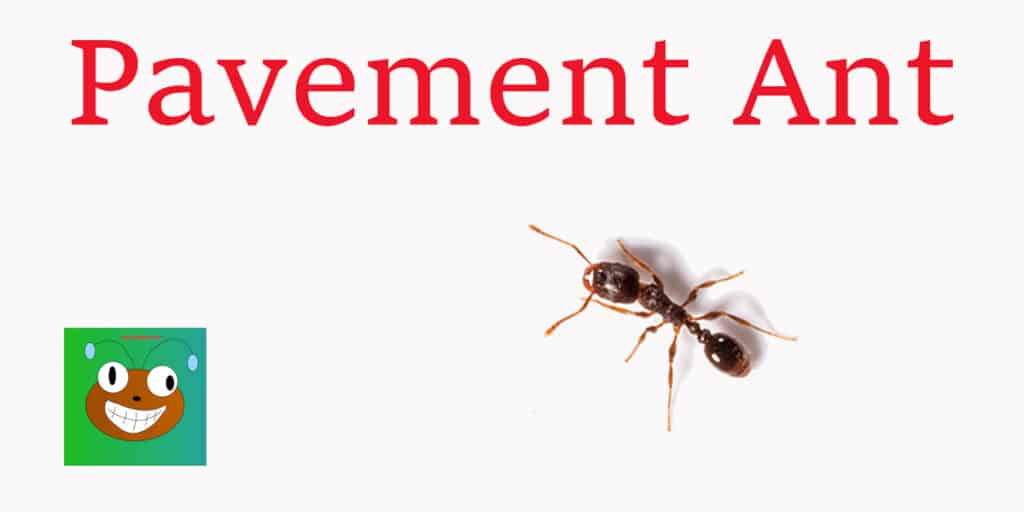
Pavement ants get their name because they typically make their nests under roadways, building foundations, and sidewalks.
Therefore, an area of disturbed soil near a paved surface is likely the result of pavement ant activity. Pavement ants may build their nests inside buildings near a heat source, mainly during winter.
These trailing ants consume many items, including honeydew from aphids, oily foods, seeds, and dead insects. Pavement ant colonies include up to 4,000 workers comprising several queens.
The queens are much bigger than the workers, going upwards of 9 mm in length.
The drones and young queens searching for partners are frequently spotted on nuptial flights during the end of spring and the start of summer. Drones and queens that reproduce have wings.
Pharaoh Ant
Another smaller and at about 2.4 mm (1/16 Inches), and interestingly the males and worker ants are actually the same size (not the Queen).
This ant can quickly become a nightmare if it infests your home, as it can survive even the most advanced household pest control attempts.

These ants will eat everything and are well known for infesting hospitals and other large corporate buildings that offer a cafeteria.
Because these ants don’t need soil or other substrates to create nests, they can infiltrate a building and start building out a home anywhere.
These ants do not care where they put their nest and have been seen nesting in everything from electrical wiring to underground sewage systems.
A unique (and sad) fact about Pharaoh Ants is that they have been caught feeding on the flesh of burn victims and are known for transferring diseases within hospitals.
Small Honey Ant
The little honey ant, often known as the fake honey ant, is a unique ant species. In some parts of the world, they are also called winter ants.
Workers of little honey ants are monomorphic, with their bodies being sleek and ranging from dark brown to black. Workers vary in length from 0.08 to 0.16 inches.
The Queens size is much bigger than the workers, measuring 0.28 inches.
Twelve-segmented antennas without a crossbar are used. Its petiole, the only piece of the thoracic pedicel, is highly present in this species.
The distinct mesonotum contraction separating the thin thorax into two segments makes this ant easy to identify.
These ants try to build nests indoors but many times end up making their homes outside.
The nests are typically found in the ground at slab joints, and houseplants are used to harvest whole communities.
Honey ants are tiny, tenacious, and forage along pathways.
Cakes, loaves, fruits, meats, nectar, honey, glucose, and other common household goods are just a few of the things they infect and thrive on (carbohydrates).
Thief Ant
Among the tiniest species of domestic ants is the thief ant. They received their name because they tend to build their nests near or inside those of other ant colonies, which they subsequently raid for food and eggs.
Although they can have numerous queens and thousands of workers, their colonies are typically smaller than other ant species.
While they have different traits, thief ants and pharaoh ants can frequently be mistaken.
Due to their preference for fatty meals and sweet delights, these ants are sometimes called grease ants or sugar ants.
The majority of the Eastern US is home to this species.
The bodies of thief ants range in color from light brown to pale yellow. They are usually 1.5 mm – 2.2 mm in size. Their body is irregularly shaped, with their thorax appearing to lack spines. But their waist comprises two nodes.
